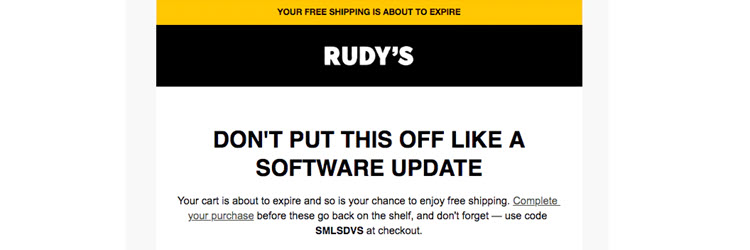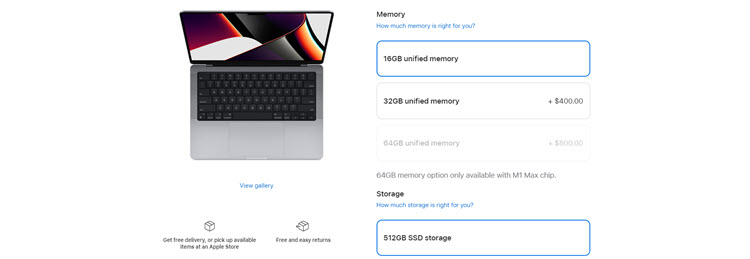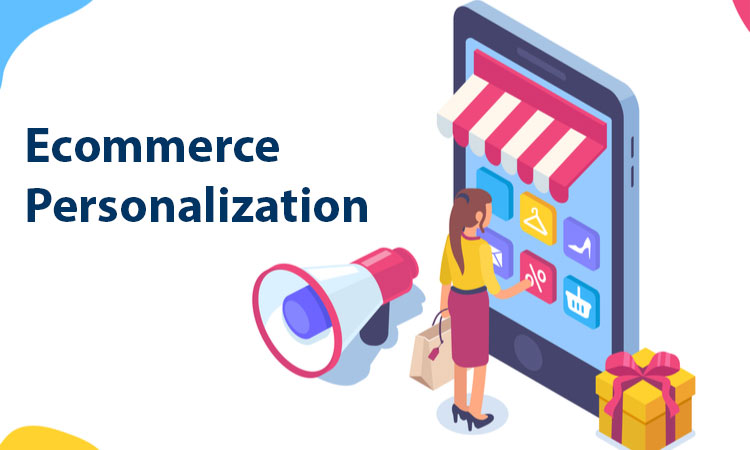Personalized customer experiences have been around for a long time. The most common example of a personalized customer experience is a sales clerk in a brick-and-mortar store, asking the customer questions to help them find a suitable product.
The development of the ecommerce industry opened many opportunities but brought along some challenges, as well. One of the main difficulties online retail has faced is the lack of human-powered personalization of the shopping experience.
Ecommerce businesses have been able to overcome this challenge by developing a set of practices grouped under the term ecommerce personalization.
In this article, you will find out what ecommerce personalization is, what its benefits are, and which tactics will help implement this essential element in your business strategy.
What is Ecommerce Personalization?

Ecommerce personalization refers to the practice of sending customers continuous, relevant and personalized offers using their preferred marketing channels. As such, it is a fundamental element of the omnichannel approach.
Personalization aims to understand customers’ needs and expectations and to fulfill them. This is achieved by using customer interactions to collect data which will be used to learn about the customer and create individual and unique shopping experiences.
Note: Ecommerce personalization is a vital part of a successful ecommerce marketing strategy.
Customer interactions allow brands to learn about their customers’ preferences relating to:
- The devices they favor. If a brand’s target audience prefers shopping via a smartphone, the brand should reallocate marketing, development, and ecommerce customer service resources to ensure the best mobile shopping experience.
- Their interest in particular products or product categories. A customer's browsing and shopping history reveal what they are looking for. Brands use this knowledge to send personalized product recommendations, often accompanied by exclusive, limited-time deals.
- The marketing channels they prefer. Every person has their favorite way of consuming information, be it reading a newspaper or scrolling through social media. Brands that learn about their target audience’s preferred marketing channels must use those channels to reach the people that are most likely to turn into customers.
- Their location. Brands can use the GPS location and IP address of a device to send personalized offers. These offers are typically in the form of loyalty programs or in-store vouchers and are used to motivate customers to interact with a brand’s physical location. A customer’s location can also be used to recommend products that match local trends or are relevant to the local climate.
Benefits of Ecommerce Personalization

The rewards of implementing ecommerce personalization are interconnected and directly impact each other. A business that implements personalization strategies can expect the following benefits:
- Increased sales. According to Invesp, 45% of online shoppers are more likely to shop on a website that offers personalized product recommendations because this reduces the time and effort they need to find what they are looking for. A shorter customer journey is a sweeter and smoother customer journey.
- Larger average order size and value. Ecommerce personalization increases order size and value because it creates opportunities to upsell and cross-sell. These techniques only make sense to your customers when they are personalized and reflect their past purchase behavior.
- Increased customer retention. Research by Netcore shows that 91% of online shoppers would abandon an online retailer because of a poor shopping experience. Customers have a poor shopping experience when a business fails to meet their needs and expectations regarding product offers, the checkout process, and customer service and support. Personalization eliminates most of these negative factors.
- Increased customer loyalty. Research by Invesp shows that 53% of online shoppers believe that stores implementing personalization practices offer a more valuable experience. This is because they make the customers feel like they are being listened to. The more a customer interacts with a brand, the more personalized and unique their shopping experience gets, causing customers to stick with brands that “know them well.”
- Competitive advantage. The overall shopping experience is what makes customers come back to your business. On top of good web design practices and creative marketing campaigns, ecommerce personalization is the cherry on the cake of the customer experience. Investing in ecommerce personalization means investing in the loyalty of customers and ultimately gaining and retaining a competitive advantage.
Note: Read our articles Loyalty Discounts Guide and Best Loyalty Programs to Use for an Online Shop to further improve customer loyalty.
Ecommerce Personalization – Strategies and Examples
Use the following ecommerce personalization strategies as an inspiration to develop the best ecommerce personalization strategy for your business.
Personalized Product Recommendations
Personalizing product recommendations involves highlighting products relevant to a customer. Recommended products are selected according to the item the user is currently looking at or has previously checked out.
Recommendations speed up your customers’ research process, allowing them to quickly locate the products and deals that best meet their needs.
Personalized product recommendations typically look like this:
- “Shop the look,” “Complete the look,” or “Wear with”
- “Customers also like” or “You may also like”
- “Picked for you”
- “Top sellers in category” (This example is typically found on the homepage, filtered on the basis of previous user activity)




Some of these forms of personalized product recommendations, such as “customers also like” and “top sellers”, double as social proof and assure a customer that the product looks and works as shown online.
Behavior-Based Retargeting

Behavior-based retargeting is the act of targeting a person with ads that lead to websites and even product pages they visited.
This strategy is enabled by the omnichannel approach and often takes the form of social media carousels. The goal of behavior-based retargeting is to allow customers to pick up where they left off in the customer journey and encourage them to reconsider the products they may have abandoned earlier.
Cart Abandonment Emails
Cart abandonment emails are messages used to follow-up with a customer who has abandoned their cart in the hope that they will change their mind and complete the purchase.
The most common reasons for cart abandonment are:
- Unexpected charges
- The need to compare products in different stores before deciding
These issues can easily be fixed by contacting customers and offering coupons, free shipping, or special discount codes. Make sure the message is casual and witty to avoid invoking a sense of pressure.
Take a look at this witty and relatable message by Rudy’s:

The email also contained a notification that the customer’s free shipping will soon expire and the code needed to claim the free shipping offer.
Upselling & Cross-Selling
Upselling and cross-selling saves customers the time they would spend looking for premium versions of products or maintenance products and accessories.
These sales techniques are typically incorporated into:
- Product pages:
- “Added to cart” pop-up notifications:
- The checkout page:



Apple employs a powerful upsell strategy, which can be likened to a “build-a-bear" approach. Apple allows customers to select a product and upgrade individual features based on their needs. Below each upgradeable component is a link which, when clicked, opens a window explaining how an upgrade benefits the device’s performance.

The price of each upgrade is clearly stated, eliminating the chances of customers abandoning their carts due to unexpected costs.

What makes Apple’s strategy stand out is that the personalization is done by the users themselves, with the right push and information from the merchant.
Guiding Customers to Relevant Content

Sometimes, customers visit an online shop to look for ideas and inspiration. Posting blog and social media content is a way to help customers get to know your brand and visualize what they want from their next purchase.
The content a business posts depends on its niche and its customers’ interests. Frequently covered topics are:
- Gift ideas
- Trends
- Viral myths
- Throwbacks to previous trends
- How-to guides
- Explanatory articles
- Product, product collection, or event announcements
Every blog and social media post features tags and invisible data (metadata). Leveraging this data allows brands to connect customers to content that matches their intent and interests. By selecting or interacting with certain content, the customer informs the brand about their pain point – a problem they want to solve. Brands use this knowledge to place product recommendations and calls to action where appropriate.
For example, a person with a skin problem will look for advice before searching for a solution. The content will most likely be written by a skincare brand or medical professional, who then gets the opportunity to offer a solution in the form of a product or service.
This offer is referred to as a call-to-action and can be delivered to the customer as a link to the product page in the article itself or via an Ecommerce chatbot, a pop-up window, or email.
Note: Find out how to add a chatbot to your website to improve customer shopping flow.
Homepage Personalization

Homepage personalization refers to the practice of offering unique homepage content to each individual customer based on their past activity. It is not a separate ecommerce personalization strategy, but a combination of several.
Depending on the data provided by the user, the homepage of an ecommerce shop will contain:
- Announcements on events in nearby physical locations
- Content and recommendations relevant to upcoming holidays in the customer’s state
- Personalized product recommendations
- Personalized product category recommendations
- Upsell and cross-sell offers
- A pop-up notification stating that the customer’s cart is not empty
- Links to blog and social media posts relevant to the customer’s activity
This strategy is especially effective for brands with a strong content strategy and physical retail locations.

Conclusion
To succeed in ecommerce, adopting a customer-centric approach is a must. Ecommerce personalization is the best way to achieve customer-centricity while acting in the business’s best interests.
Use the information and examples provided in this guide to implement ecommerce personalization in your online business. Learn also how can you use Big Data in eCommerce to leverage personalization and how can big data help grow you business.
